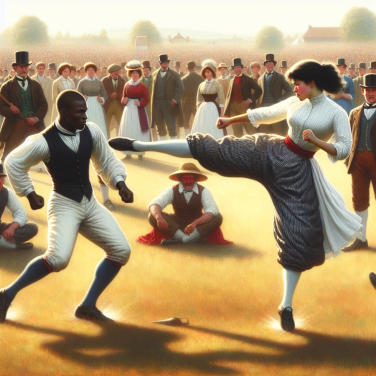Deciphering the Scientific Secrets Behind Horseshoe Superstitions
Horseshoe superstitions have been a part of folklore for centuries, often associated with good luck and protection. These superstitions stem from various historical, cultural, and spiritual contexts, but what lies behind them? Are these beliefs purely based on tradition, or can science shed light on why they've endured for so long?
One of the primary beliefs surrounding horseshoes is their power to bring good fortune. This idea is linked to the horseshoe's material—iron. Historically, iron was considered extremely powerful, as it was able to withstand fire and forge weapons. The strength and resilience of iron translated into a symbolic protection against evil in many cultures. Scientifically, iron has magnetic properties, which could have contributed to the belief in its ability to attract good luck or deflect negative forces, much like a magnet.
The shape of the horseshoe also plays a significant role in the superstitions. The 'U' shape has been interpreted as a symbol of the moon, which is a common emblem of fertility and prosperity in various mythologies. From a more practical perspective, the curved shape is perfect for fitting around a horse's hoof, and it also resembles a container or a cup, which could metaphorically 'hold' the good luck.
Furthermore, the act of nailing the horseshoe to a threshold—typically above a door—has significance as well. Doorways have been seen as transitional spaces where the barrier between the outside world and the personal domain is thinnest. Placing a powerful symbol like a horseshoe there was thought to protect the home from harm. Scientific scrutiny reveals that doorways are often points of weakness in building structures, prone to damage and decay; reinforcing them with iron could have provided a tangible benefit, which then lent credence to the superstition.
The number of nails used to secure the horseshoe also adds to the mystical narrative. Many traditions hold that seven nails—and sometimes three or nine—should be used because these numbers have special significance. They are often considered lucky or sacred across various cultures and religions. While there's no scientific basis for the power of numbers, the human tendency to find patterns and meaning in randomness, known as apophenia, may explain why specific numbers feel luckier than others.
In analyzing the legends around why a horseshoe must be hung with the ends pointed upwards, tradition says that this positioning ensures that luck doesn't 'spill out.
Read also:
Thrilling World of Skate Racing: A Comprehensive Guide
The Role of Horseshoes in Equine Health
Delving into the realm of equine health, horseshoes are more than traditional farrier's craft; they play a critical role in the protection and enhancement of a horse's hoof. Various terrains and workloads can cause significant wear and tear on hooves. Horseshoes are designed to mitigate this wear by providing a protective barrier between the hoof and the ground. Different shoes are tailored for specific activities, such as racing, jumping, or trail riding, ensuring that horses receive the appropriate support and traction for their respective disciplines.
In addition to their protective qualities, horseshoes also offer therapeutic benefits. Horses suffering from hoof diseases or structural abnormalities can find relief and support through corrective shoeing. Farriers and veterinarians often collaborate to design shoes that alter the angle of the hoof, improve movement, and alleviate pain. This union of tradition with the science of veterinary medicine highlights the evolution of horseshoe application from simple footwear to a nuanced aspect of equine healthcare.
Horseshoes and Their Historical Significance
From a historical perspective, horseshoes have been associated with various superstitions and traditions. Their crescent shape was often regarded as a symbol of good fortune, and finding a horseshoe was considered a stroke of luck. In medieval times, horseshoes were even nailed above doorways to ward off evil spirits. Though these practices may seem archaic, they underscore the cultural importance placed upon horseshoes across centuries.
Understanding the mystique of horseshoes also involves recognizing the craftsmanship that goes into their creation. Traditional blacksmithing methods, including forging and shaping metal, have been passed down through the generations. Despite advancements in technology, many farriers continue to employ these time-honored techniques, preserving the heritage of their trade while integrating modern materials and knowledge to better serve the horses of today.
Modern Innovations in Horseshoe Design
With advancements in material sciences, the modern era has seen a surge in innovation concerning horseshoe design. Farriers now select from a range of materials, including steel, aluminum, and even synthetic composites, to tailor the horseshoe to the horse's specific needs and the demands of different equestrian sports. Additionally, studies into the biomechanics of equine locomotion have informed more anatomically-supportive horseshoe shapes and features, enhancing performance and reducing the likelihood of injury.
Exploring the Cultural Significance of Horseshoe Traditions
As much a symbol of luck as a practical tool, horseshoes have fostered numerous traditions across different cultures and societies. The iconic shape—a crescent, open heel-end and closed toe-end with nail holes—is instantly recognizable and steeped in history, superstition, and cultural practices that go beyond its obvious utility for a working horse.
In rural agrarian societies, where the horse was central to daily life, the horseshoe became a powerful symbol. Traditionally made of iron, a material believed to ward off evil spirits, the horseshoe was commonly affixed to the entry points of homes and barns. Iron’s strength and the fact that it was forged with fire, an element historically associated with purification and protection, compounded the horseshoe's significance.
The orientation of the horseshoe when hung or placed is also subject to traditional beliefs. Some cultures insist that the horseshoe should be hung with the open end upwards, ensuring that it collects and stores good luck like a container. Others believe the opposite—that the open end should be facing down so that luck pours out on those passing beneath it. While interpretations vary, the consistency lies in the horseshoe’s role as a good luck charm.
In addition to agricultural communities, horseshoes hold a place of prominence in the folklore of many societies. For example, in Ireland, the horseshoe is associated with the legend of Saint Dunstan, who supposedly nailed a horseshoe to the Devil's hoof when he was asked to shoe the Devil's horse. This caused the Devil great pain, and Dunstan agreed to remove it only on the Devil's vow to never enter a place with a horseshoe over the door.
Cultural significance extends into the realm of marriage and fertility. In many cultures, it is considered good luck for a bride to carry a horseshoe on her wedding day. The emblematic shape, resembling a crescent moon, has been linked to various goddesses of fertility, enhancing its symbolism for nuptial ceremonies. On a more whimsical note, the tossing of a horseshoe in games harks back to the days of the Roman Empire, where it evolved from the sport of quoits—a game played by throwing a metal ring over a set distance to encircle a pin—a practice somewhat akin to modern-day horseshoe pitching.
The interplay between horseshoes and their mystical connotations has even seeped into popular culture.




